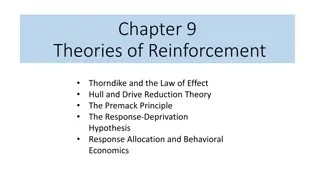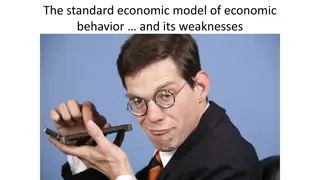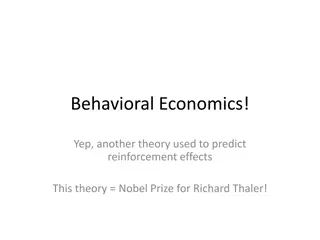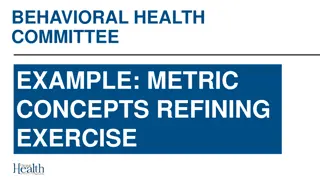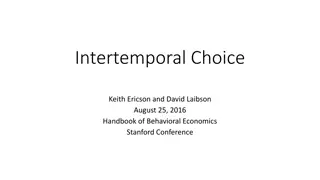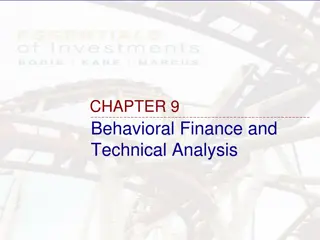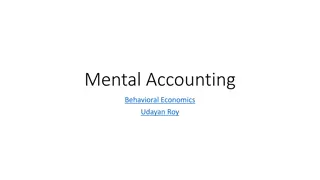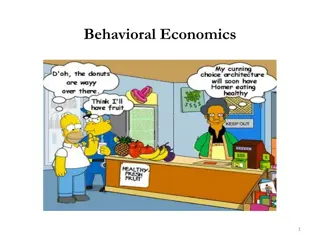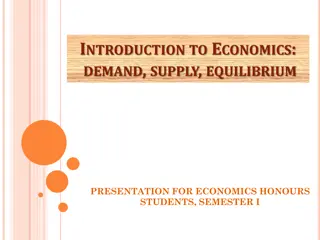Understanding Behavioral Economics: Key Concepts and Insights
Behavioral economics combines traditional economic assumptions with psychological insights to explain and predict human behavior. By exploring concepts such as Kahneman's System 1 and System 2, the influence of emotions on decision-making, and the tendency for humans to make errors, this field sheds light on how individuals make choices and the factors that can affect their decisions.
Uploaded on Sep 13, 2024 | 0 Views
Download Presentation

Please find below an Image/Link to download the presentation.
The content on the website is provided AS IS for your information and personal use only. It may not be sold, licensed, or shared on other websites without obtaining consent from the author. Download presentation by click this link. If you encounter any issues during the download, it is possible that the publisher has removed the file from their server.
E N D
Presentation Transcript
Behavioral Economics: Introduction to Behavioral Economics Introduction to Behavioral Economics
Definition Behavioral economics uses variants of traditional economic assumptions (often with a psychological motivation) to explain and predict behavior, and to provide policy prescriptions. (Laibson & List, 2015) Introduction to Behavioral Economics
Two Systems: Kahneman System 1 operates automatically and quickly, with little or no effort and no sense of voluntary control. System 2 allocates attention to the effortful activities that demand it, including complex computations. The operations of System 2 are often associated with the subjective experience of choice. Kahneman, Daniel. 2011. Thinking, Fast and Slow. New York: Farrar, Straus and Giroux Introduction to Behavioral Economics
System 1 vs. System 2 System 1 System 2 Emotional Analytic Fast Slow Reflexive Reflective Effortless Effortful Impulsive Deliberative Short-sighted Patient Introduction to Behavioral Economics
The Issue Econs weigh the costs and benefits of alternatives before making their choices. Humans use costs and benefits but can be influenced by other factors when making choices. Introduction to Behavioral Economics
People try to choose the best feasible option, but they sometimes don t succeed. Although we mostly care about our own material payoffs, we also care about the actions, intentions, and payoffs of others. People care (in part) about how their circumstances compare to reference points. People have self-control problems. Introduction to Behavioral Economics
People make mistakes when faced with certain types of decisions. By understanding when they are likely to make mistakes, people can avoid errors. Being a good economist means understanding when we are likely to be human! Introduction to Behavioral Economics
Comparing Econs and Humans Lesson Econs Humans Use system 2 for all their decisions. Use system 1 to make many routine decisions. 1 Carefully weigh costs and benefits to make decisions. Make decisions on past experience or quick judgments. Are not subject to cognitive biases when making decisions. Are subject to cognitive biases when making decisions and so may use anchors and fall into relativity traps. 2 Make decisions by weighing costs and benefits equally. Tend to weigh losses greater than gains. 3 Are not influenced by their current situation when making decisions. Tend to bias to the default or to things they already have. May discount costs and benefits that occur in the future. May have self-control problems and discount the future too much or be subject to present bias, causing inconsistent decisions. 4 Only use costs and benefits to make decisions. May make decisions based on fairness or for other emotional factors such as whether work is meaningful. 5 Introduction to Behavioral Economics






